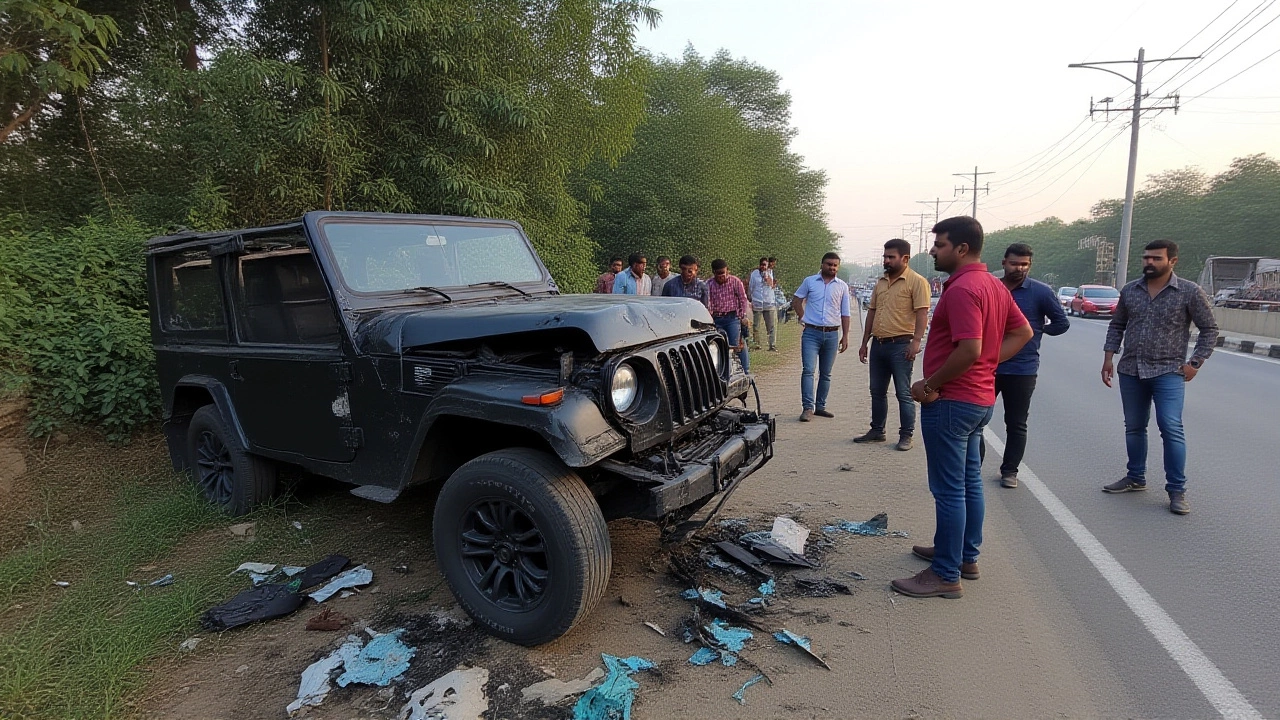Gurgaon Crash – Latest News, Causes, and Safety Insights
When discussing Gurgaon crash, a major traffic collision that occurred in Gurgaon, Haryana, and sparked nationwide discussion on road safety. Also known as Gurgaon accident, it illustrates how high‑speed traffic, dense urban planning, and occasional driver error can combine into a dangerous situation. Road safety, the set of practices and infrastructure designed to prevent accidents and protect road users becomes a critical factor, while Traffic police, the law‑enforcement agency responsible for managing traffic flow and enforcing regulations and Emergency response, the coordinated effort of ambulances, fire services, and hospitals to treat victims quickly are the frontline responders. The incident shows that Gurgaon crash encompasses not just a single event but a web of causes, reactions, and policy lessons.
What Triggered the Gurgaon Crash and How It Links to Wider Issues
The Gurgaon crash stemmed from several intertwined factors. First, rapid urban expansion in the National Capital Region has created crowded highways where heavy trucks share lanes with commuter cars. When a heavy vehicle fails to brake in time, the kinetic energy transfers to the trailing vehicles, often resulting in a chain‑reaction pile‑up. Second, the region’s traffic signals and signage sometimes lack clear visibility, especially during monsoon clouds, making it harder for drivers to anticipate sudden stops. Third, driver fatigue and distraction—common in a city where long commutes are routine—add a human element to the equation. According to a recent survey by the Indian Ministry of Road Transport, over 60% of severe accidents involve either signal violations or driver inattentiveness, underscoring the close link between road safety measures and accident rates. Moreover, the Gurgaon's high‑density commercial zones often see overloaded vehicles, which raise the risk of brake failure. When you combine poor road design, inadequate enforcement by traffic police, and delayed emergency response, the odds tilt sharply toward a major collision.
Learning from the Gurgaon crash means looking at the whole ecosystem. The government’s new “Smart Highway” initiative promises better lighting, real‑time traffic updates, and AI‑driven signal optimization, all of which aim to reduce human error. Simultaneously, community awareness programs encourage drivers to take regular breaks and avoid using mobile phones while driving. On the enforcement side, increased deployment of speed cameras and faster ticket processing by the traffic police has shown a 15% drop in violations on similar stretches. Finally, strengthening emergency response—by positioning ambulance hubs closer to high‑risk zones—cuts critical minutes off the treatment timeline, which can be the difference between life and death. Together, these steps illustrate how the Gurgaon crash not only reveals immediate causes but also points to systemic changes needed for safer roads across India.
Below you’ll find a curated collection of articles covering every angle of the Gurgaon crash—from on‑the‑ground eyewitness reports and police statements to expert analyses of traffic engineering and post‑accident medical care. Whether you’re a commuter, a policymaker, or just curious about how such incidents shape public safety, the posts under this tag provide a complete picture and practical takeaways you can use right away.
Five Dead, One Critical in Gurgaon Thar Crash After Hitting Divider at 100 km/h
A high‑speed crash on the Delhi‑Gurgaon Expressway near Jharsa flyover killed five young adults and left driver Kapil Sharma critically injured, sparking calls for stricter road safety measures.
